For most people, the very idea of “printing” either means using inks or some other medium to put words or images on paper, or it can mean the way a gun can be outlined when covered by clothing.
Today, however, printing takes on a whole new meaning because there are affordable machines readily available to consumers that can duplicate 3D objects. Typically, these devices take a 3D model program and use it to replicate an object. This includes guns that supposedly can fire real bullets just as well as a gun produced by more conventional methods.
3D Printing vs. Conventional Gun Manufacture
Most manufacturing today is done by “subtractive techniques”, where a piece of metal or other materials are shaped by milling or carving into the parts required to make a gun. 3D printing is considered an “additive technique” because the object is built up into its complete form in a series of layers. 3D printing is similar to taking boards and gluing them together to make a form as opposed to cutting the form out of a block of wood that is already at the proper size.
Even though 3D printers have been around for some time, the path for them becoming available to consumers was blocked until the patent for the Fused Deposition Modeling printer expired in 2009. Today you can buy a basic 3D printer for under $1000.00 and use it to make all kinds of different things provided you have the plans or “program” required to tell the printer how to duplicate the design.
Click here to get your Green Beret’s Guide To Combat Shooting Mastery & Active Shooter Defense!
Here are the main types of 3D printers. Some may cost more than $1000 depending on the materials they are capable of using and the quality of the finished product. Not every material or printer on this list is suitable for making a safe and viable 3D gun, however I’m sure there are people that will disagree and wind up hurting themselves in the process.
- Fusion Deposition Modeling (FDM) – This system uses a nozzle that sprays hot plastic filaments that will cool down and form the 3D object. This is the cheapest type of 3D printer available to the general public. All that is needed to run this printer is a box, nozzle system, and a way to turn the digital data into movement. This system can print in many different sizes depending on what is going to be printed.
- Stereolithography (SLA) – This was the first type of 3D printer invented in the 1980’s. Unlike FDM models, SLA uses a liquid resin that reacts by hardening upon exposure to laser light. The resin usually sits in a vat and the object is formed in the liquid layer by layer. Once the program is done running, you can simply pull the finished object from the liquid chamber. SLA is more expensive, however it also produces more finely detailed objects than FDM.
- Jetting – Sprays a liquid polymer onto a base and hardens it with flashes of UV light instead of using a laser. Depending on the printer, you may also be able to add powdered materials or layers of glue to change the durability of the object. It can also produce objects that are very detailed and precise in their form. Because jetting uses advanced polymers, it is usually used at the industry level as opposed to the consumer level.
- Selective Laser Sintering (SLS) – This industrial 3D printer is mainly used for mass-producing functional parts or prototypes. It uses powdered materials that are fused by a laser. SLS printers can make very durable and precise objects provided you have the right powders and also have the correct program to arrange them in suitable layers.
- Metal printing – This printing type uses electron beam melting (EBM) or selective laser melting (SLM) to create an effect similar to welding in order to produce 3D objects. The printer platform slowly moves downward as layers of powdered metal are added and melted to create the required form. This type of printing is very expensive and is not usually seen outside of industrial manufacturing.
How Do 3D Printers Work?
3D printers all have 3 basic parts: a digital file, the printer itself, and the material used to make the object. The digital file contains information that allows the printer to shape the material into the specified object. If you were able to read the file, you would see that it divides the object into layers that are described by the exact dimensions for each aspect of that layer. This includes the inner landscape such as hollows as well as the outer shape.
The actual printer must be capable of building each layer with as much detail as possible. They usually have a sealed box or vat that can hold both the object and the material while it is under construction. These printers must be carefully set and calibrated to ensure that each object is correctly made.
Printing Material
Today, most home based 3D printers make use of ABS plastic because it comes in many colors and is easier to use than other materials. It is good for making plastic prototypes, models for school projects, and even some artistic designs. Even though some of these designs can be very durable and hard to break, you must never forget that the base material is still plastic. There are also other, more expensive materials such as ceramic, plastic hybrids, and even metals that can be used in other printers.
If you want a more durable finished product that can withstand the kind of heat and pressure produced by a gun, I do not recommend the kind of printers commonly available for home use. That being said, there is a fierce debate going on today surrounding the production of 3D guns by these and printers that utilize other materials.
History of the 3D Plastic Guns
From the get go, there has always been concern that 3D printing could be used to make untraceable firearms in virtually unlimited quantities. In the early years of 3D printing, the printers capable of making a gun were very large, heavy, and expensive. If you didn’t have the proper printer, plans, and materials, it was entirely possible to make something that looked like it would work. Upon firing, however, most of these guns exploded or simply fail to fire at all.
Even now, relatively few people that aren’t already bound to a government controlled gun manufacturer or the government actually have the necessary background in how firearms work, materials and design principles. Supposedly, this all changed on May 5, 2013. That was the day Cody Wilson, of Austin Texas, and owner of the non-profit Defense Distributed supposedly successfully fired the first 3D printed plastic gun. He named the handgun he designed “The Liberator”. The Liberator fired the relatively light .380ACP round.
After Cody Wilson reported about his gun, the Australian police used a $1,700 3D printer to make a Liberator themselves in order to test it out. This, in turn, started off the legal battle over the plastic 3D printed pistol in 2013. Legal battle aside, the Australian police were unable to produce the same results as Cody Wilson using the same equipment, materials, and ammo. According to them, every time a Liberator was fired, it shattered. They ultimately concluded that 3D printed handguns that are made of plastic have a greater chance of exploding and shattering when fired. If the first shot doesn’t blow up the gun, the second or third one will. Plastic guns aren’t as strong and durable as traditionally made metal guns. If the 3D printed gun was made of metal it might have worked better, but 3D printers that print metal can cost over tens of thousands of dollars or more.
As someone that has been handling guns for decades, instinctively there are some questions I have about both sets of test firings.
Did Cody Wilson do something different from what he reported in order to succeed? Did the Australian Police deliberately fake following the instructions in order to produce “evidence” of failure or, did they simply not follow the 3D plans correctly or make an honest mistake? Was Cody Wilson’s gun that made the safe shooting test the first gun me made to fire the .380 ACP bullet or were there other guns that exploded first? The answers to these questions are unknown…
One thing we do know for certain, after this successful test firing, Wilson posted his plastic 3D plans on the internet. Shortly after this, the US government blocked and banned these plans from being shown on the internet on his non-profit website Defcad.com. The government claimed Cody Wilson violated US International Trade in Arms Regulations, and the State Department accused Cody Wilson of exporting weapons without a license. This, in turn caused his website to be taken offline, and Wilson faced the possibility of fines and jail time. Cody Wilson decided not to give up and walk away. Instead, he sued the Obama administration, claiming that barring him from publishing the blueprints inhibited his First Amendment rights.
Most uninformed individuals and some anti-gun policy makers on the subject of 3D printers are trying very hard to keep these types of firearms, plans, and manufacturing from going viral. In a nutshell, and based mainly upon their own ignorance about how firearms work, you are likely to hear the following:
- They believe a safe untraceable plastic firearm could be made as easily as downloading the plans from the internet.
- 3D printers are filled with some kind of cheap, easy to manufacture and obtain magic material(s) that are stronger than metal and can withstand the heat, force, and recoil produced by conventional ammo. As a side note, I’m sure automobile manufacturers would love to know more about this kind of magic material, especially if it is cheap, easy to manufacture, and already proven reliable.
- Suddenly, after an equally magical printing process is completed, anyone can have a plastic gun without a serial number, no background check done on the owner, and totally untraceable. To them, of course, this already means a crime has been committed.
After years of state attorneys generals blocking the release of the 3D gun plans in court battles during the Obama presidency, Cody Wilson’s case finally went before US District Judge Robert Lasnik in Seattle Washington in July 2018. As a result, Cody Wilson was issued a restraining order that stopped him from putting his 3D printed gun designs on the internet for free because there could be harm caused as a result of the manufacture of these guns.
On August 29, 2018, Judge Lasnik extended that restraining order. The State Department is also still blocking Wilson from “exporting” the 3D plans on his website. On the other hand, Judge Lasnik also stated 3D gun plans “can be mailed on a flash drive, e-mailed to you, or by using secure download links”. While Cody Wilson believes he can’t just let anyone download the 3D gun plans off his website, he doesn’t believe he is fully restrained from spreading his plans. Instead, he claims he can sell the plans domestically to a buyer that pays him whatever they think is a good price for the information. If someone else resells the plans or posts them again and they end up being available internationally, he feels it is their problem, not his; because once something is posted on the internet it will always be there.
After the US District Court outcome, the US Justice Department agreed to a settlement and dropped all the charges that Wilson violated US International Trade in Arms Regulations and exporting weapons without a license. They also paid him $40,000 for all of his court costs.
What Was Cody Wilson’s Intention to Sell the Liberator?
It is Wilson’s basic intention and belief that anyone except criminals should have easy accesses to guns for self protection. He doesn’t want to increase gun violence, but still feels that giving people the means to protect themselves is more important that limiting gun rights. He now sees his 3D plastic printed guns as a way to counter the anti-gun movement and its endless agenda to enact stricter gun laws in the US. Wilson told the Wire in a resent interview, “All this Parkland stuff, the students, all these dreams of ‘common sense gun reforms’? No. The internet will serve guns, the gun is down-loadable. No amount of petitions or die-ins or anything else can change that”.
Wilson also believes that the government will continue to try to stop 3D printed gun plans from getting on the internet. According to him, however, they will fail once the plans are spread around enough and as many people as possible have them.
What Could Be Used to Outlaw 3D Plastic Printed Guns?
Cody Wilson may have won the first round in his court fight, but state and local governments are not finished yet. The federal government, if they wish to, can charge individuals who build these guns under the The Federal Undetectable Firearms Act. This act makes it illegal to build or own guns that don’t activate metal detectors. This statute requires that every gun made in the US must have a minimum amount of metal in it to activate metal detectors. This law dates back to the plastic gun scare when Glock pistols were first introduce into the US. To get around this problem just add a piece of metal to the gun design.
Some anti-gun groups would like the federal government to rethink how to enforce gun laws. These groups want to clarify and expand the legal boundaries on what is illegal manufacture, sell, or own that would violate state or federal laws. For this to work, the courts would have to order, and the police would have to enforce. As we have seen with illegal immigrants and the spread of “legal” marijuana, depending on the jurisdiction, the compliance of the police may not always be guaranteed.
In theory, a plastic 3D handgun might go through a metal detector without setting it off. There are, however, newer detection systems that can easily spot plastic guns. This includes backscatter X-ray and millimeter-wave-radar imagers. The gun may make it through metal detectors, but the scanners will be set off. Aside from that, most ammunition still has a metal case, and the bullet would be detected no matter how you try to hide them.
The states and local governments will try to pass laws and ordinances that would ban 3D plastic guns unless they meet the same requirements as more conventional guns. Failure to meet, at a minimum, the following guidelines could result in fines or imprisonment.
- Must be traceable.
- Will have a serial number.
- To build or own one, you must pass a background check.
Pros and Cons of 3D Plastic Guns
Now that you have an introduction to how 3D printers work and the current legal framework surrounding 3D plastic guns, let’s have a look at their advantages and disadvantages.
First, they can slip through security check points that use only metal detectors provided you have some way to also slip the ammo through. This may be useful for times when you are bugging out and don’t want having a gun to prevent you from getting through a checkpoint.
When you make a gun using a 3D printer, it does not have to look precisely like a gun. Instead, you can fabricate a casing or outer design that makes it look like something else entirely. Depending on how the gun is designed, it may also be broken down into parts that do not resemble conventional gun parts.
Unless the materials used to make the gun are doped with special compounds, the gun is likely to be totally untraceable. Since you will be making the gun at home, there is no way to stop you from not including a serial number on the weapon. Needless to say, these guns would most likely not require a background check to make. It is possible that attempts to regulate the materials and printers will also meet with resistance from printer and material marketers and manufacturers.
Finally, these guns are also easy to dispose of. Anti-gunners feel this will make them even more appealing to criminals. Sadly, they forget that criminals like to succeed and have an advantage. While novices to crime may try these weapons out, they will soon go back to more reliable weapons because that is what gives them the advantage. As always, crime is still about opportunity and having the advantage over the other person regardless of what the law and society say.
One of the biggest problems with 3D printed guns is most can only hold one or two rounds of ammunition. In order to reload them, you may have to take the entire gun apart. This can spell disaster in an actual situation where you need to defend yourself and there is no time to reload.
Simple Hack That Lets You Hit Any Target From 100 Yards
To add insult to injury, most 3D printed guns have very poor accuracy when fired. Some of this problem is caused by the light weight of the gun. When the gun is fired, the heavy recoil can easily cause the shooter to miss the target. In most cases a simple “Ghost” weapon would be easier and cheaper to to make or buy than making a 3D gun.
3D Plastic Printed Guns vs Ghost Guns
According to the BATF “Ghost Guns”, or 80% finished AR-15 and Glock receiver guns are legal. Here, the builder uses mostly hand tools to finish the metal or polymer receiver. Since you finished this 80% receiver yourself, it is legal for you to own the finished AR-15 or Glock. The BATF requests that you put an ID number on it, but few do. Since you do not need to have a background check to buy the kit, there is no telling who actually owns these “Ghost Guns”, or who they are being sold to after completion. Legally, you can only build one for your personal use so long as you are eligible to own a gun to begin with.
After the receiver is finished it can be assembled with metal parts that are easy to locate and buy over the counter. The only part of the AR-15 or Glock that needs a background check is the receiver, which the FEDS classify as a weapon. The finished AR-15 or Glock is made of metal or polymers and not totally of plastics. It will be stronger and more accurate than 3D printed gun provided you assemble it correctly.
At this time, a “ghost Gun” is cheaper to build and is more durable than a 3D printed plastic gun. The average cost to build one is around $500.00 for the AR-15 and about $350.00 for the Glock. The 3D printed gun is much more expensive because you must buy the computer program, a printer that is capable of printing the 3D gun, and the printing materials, which can cost many thousands of dollars. Even after all that expense, the gun may still fail to work properly and may even injure you.
As it stands today, a cheaper homemade assembled gun would be safer, more accurate, and easier for criminals to obtain than the more expensive 3D plastic printed weapons. Maybe in the future the 3D printing will improve in cost and quality. Until then, shooters of the 3D plastic printed guns are taking their life in their hands, and quite frankly, are better served by looking to other gun choices.
What 3D Metal Printed Handguns?
Even though there was very little news coverage about it, in 2013 the first 3D metal printed handgun was printed by Solid Concepts of Austin Texas. This 3D metal printed handgun was a Stainless steel Semiautomatic model 1911. 45ACP Pistol. This pistol design was chosen because the patent had expired and the plans are now classified as public domain.
This Metal printed 1911 .45ACP pistol was printed with a mixture of 3317-4 Stainless Steel powder and Incone 625 components. The grips were made of carbon-fiber using a Selective Laser Sintered method, as reported by Kent Firestone, VP of Additive Manufacturing at Solid Concept. To prove to the public that they made a metal printed pistol, Solid Concepts made and posted videos on YouTube showing employees of the company safely shooting prototypes of the stainless steel 1911.45ACP pistols. After these videos were made and shown for a while, they were taken down by the requests of the US Government.
It would seem that 3D metal printed guns are safer and more reliable than plastic models despite the cost. This, in turn, has led to a new use for 3D metal printers in the firearms industry. Even after a gun model has gone off the market, that doesn’t mean people aren’t looking for spare or replacement parts. Reliable 3D metal printing means it is easier for firearms manufacturers to make these parts without having to retool their factory to any great extent.
Today, most people don’t understand that industrial Laser-sintering equipment is very expensive. To the criminals there is no advantage in making pistols this way. It is easier to steal them or buy them on the street from your friendly illegal gun dealer that is happy to have a good paying job in a booming business courtesy of all the anti-gunners busy making more laws that don’t work.
Anti-gunners would have you believe that 3D printing systems will make cheap and safe untraceable firearms available to criminals. Both the 3D plastic printed firearms and the 3D metal printed firearms are very expensive to manufacture. When it comes to safety, the 3D plastic firearms are very dangerous to shoot due to the weapons exploding when fired and have very poor accuracy. Even if you had the money and equipment to print metal guns, it isn’t worth it because other methods are still cheaper and produce better weapons.
Today, many people entering the debate on 3D plastic guns don’t understand the basics of firearms and ammunition let alone the laws of physics that bind the materials and the way guns work when they are fired. The simple fact is, unless a lot more work is done, modern plastics and resins available at the consumer level cannot take the place of properly forged metal. Even if you make a gun from 3D plastics or other like materials, it is highly likely that it will explode in your hands or completely miss the target.
As the simplest proof, I will close with this question. Consider how easy it is to load a conventional revolver, pistol, shotgun, or rifle. If 3D plastic guns are truly as safe and compatible, why doesn’t their design make for the same easy loading of the same quantity of bullets?
Resources
Range365 A Short Story of 3D Gun Printing By Frank Miniter May 13,2015
Vox The battle to stop 3D-printer guns Aug. 29, 2018
USA Today Tech Aug. 2, 2018


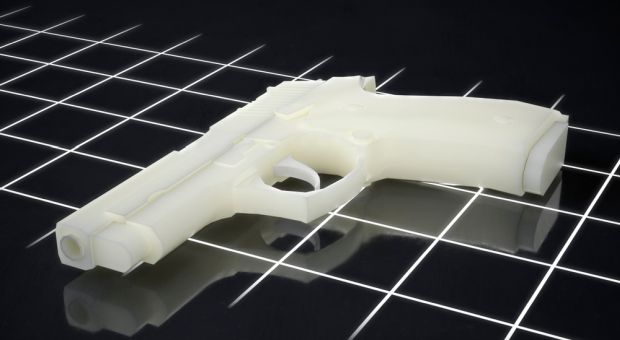
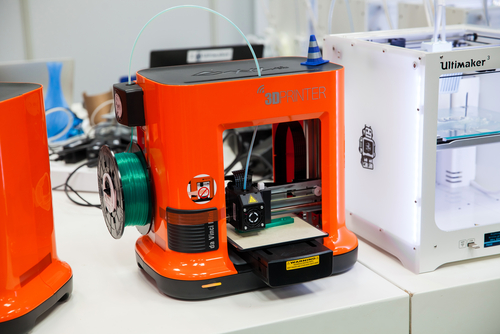

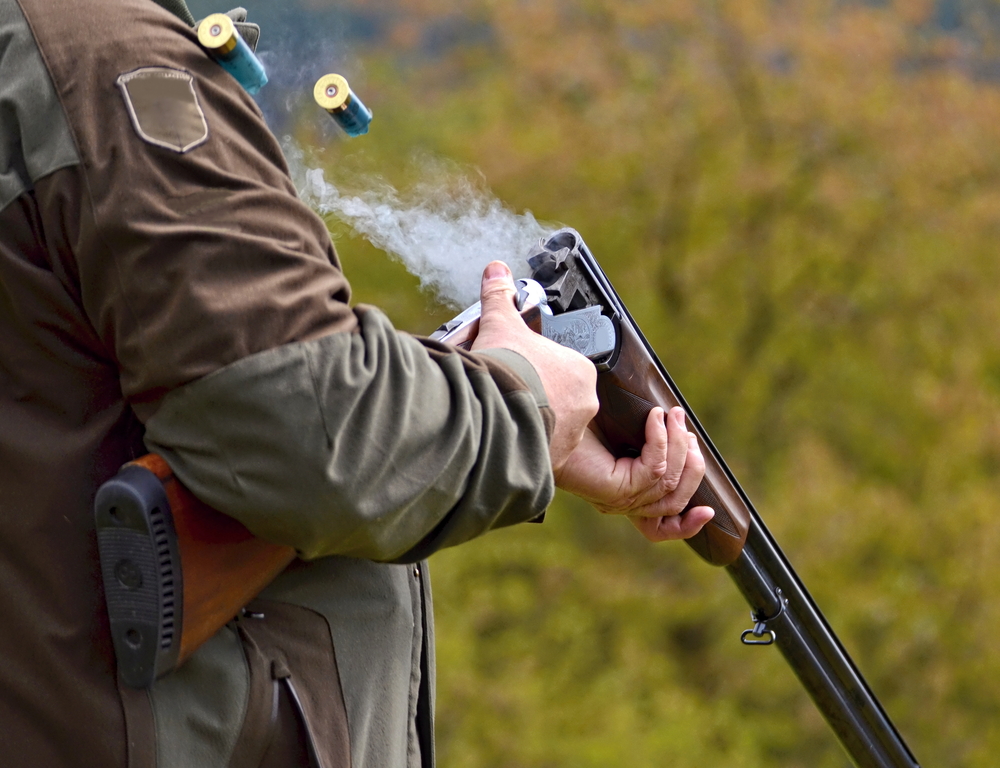
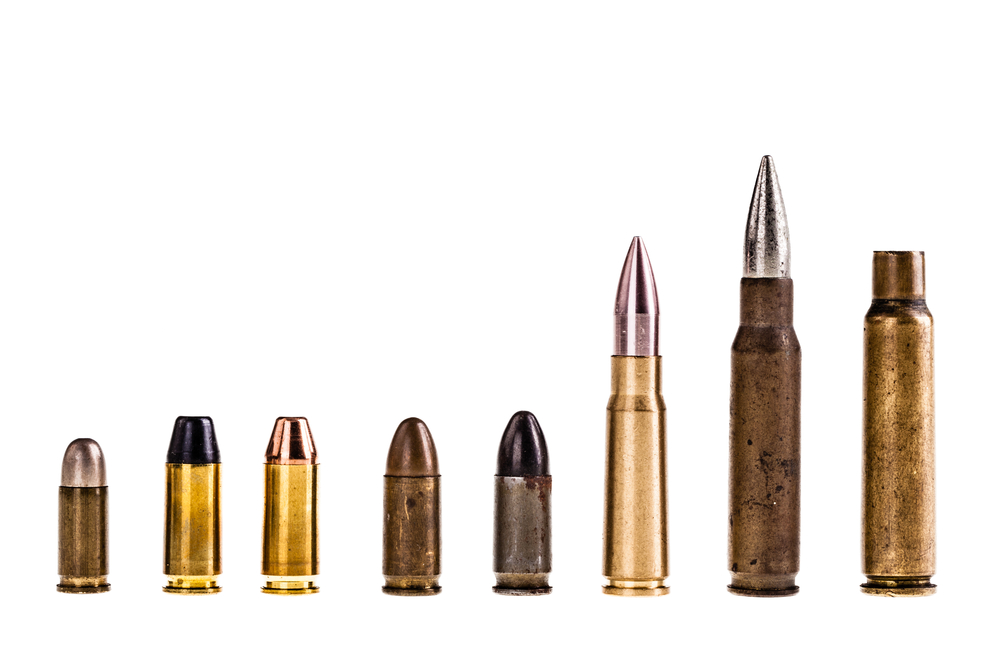
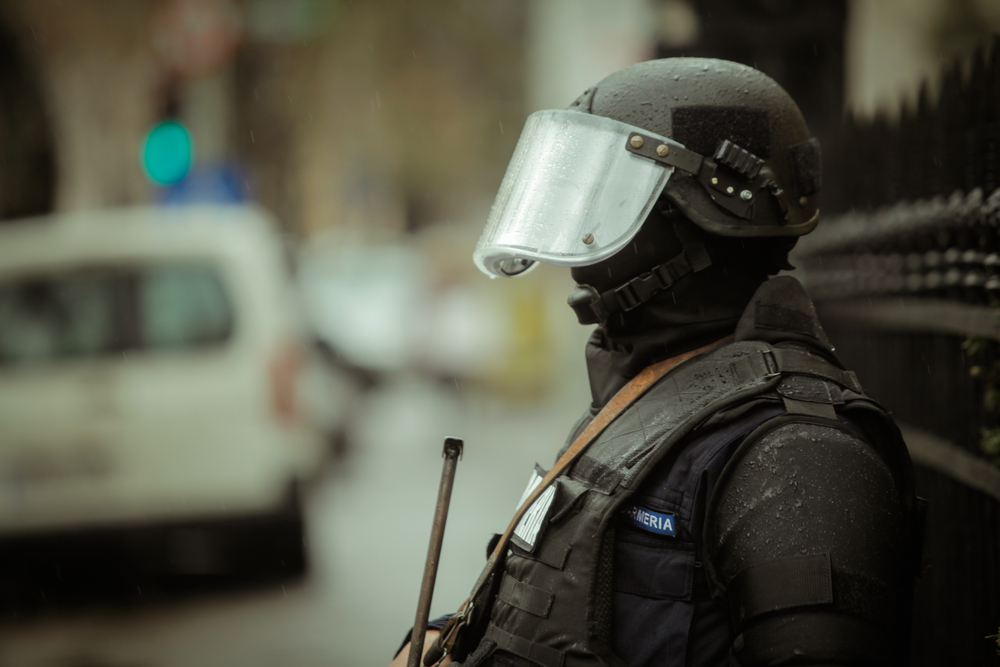


Elaine E | December 5, 2018
|
Is 3d printing really the future of gun making? I mean, some complex mechanisms don`t sound doable via 3d printing or am I wrong?
Larry S | May 1, 2019
|
As with anything, what is expensive today will get more affordable with the passage of time. Metal multi-material printing is rapidly advancing. Industry is just starting to switch over to it to take advantage of some of its enormous potential. Someday almost everything will be made this way, weapons included. Ideas cannot be contained. Government suppression of ideas, like printed gun plans, are doomed to failure. People always find a way around the blocks. That is the very definition of a black market. Since the driving pressure is to get off dependence in centralized supply and distribution (which can be easily controlled by an oppressive government) the desire to have a technology that allows an individual or small group to maintain a fairly high standard of living without dependence on centralized systems to supply it (electronics, arms, tools, transportation parts, power generation equipment, etc.) is irresistibly attractive. People will do whatever they have to do to acquire it.